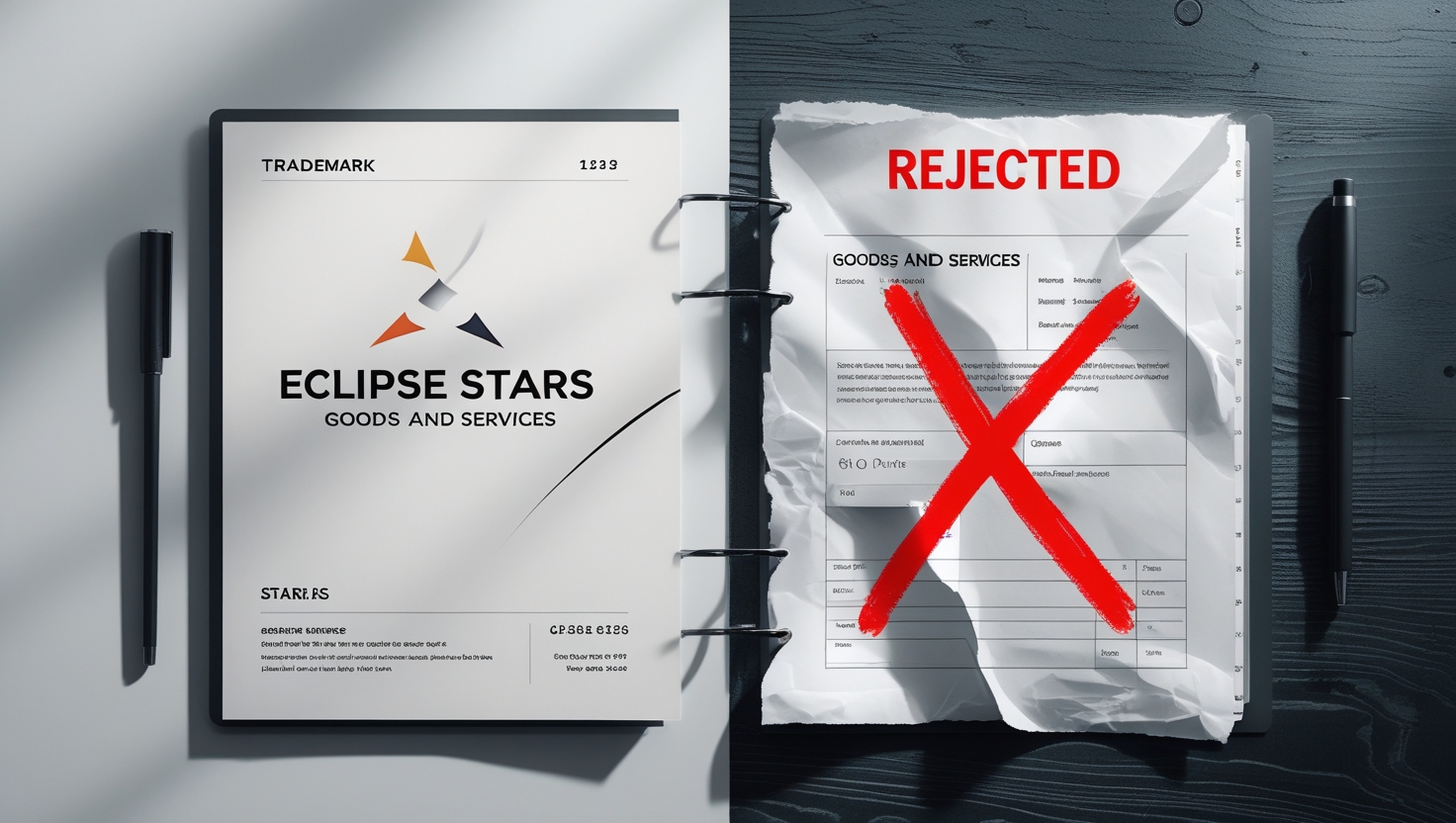In today’s fiercely competitive market, building a recognizable and legally protected brand is a must — especially for businesses involved in electrical appliances, lighting equipment, and sanitary products. These products fall under Trademark Class 11, which includes items such as LED lights, air conditioners, geysers, fans, water heaters, sanitary ware, and ventilation systems.
However, many businesses face rejection while registering a trademark under Class 11. This is often due to preventable mistakes or a lack of understanding of the application process. In this blog, we’ll walk you through the most common reasons why Class 11 trademark applications get rejected — and more importantly, how you can avoid them.
📚 Quick Overview of Trademark Class 11
Before diving into the reasons for rejection, let’s clarify what Class 11 includes.
Trademark Class 11 covers goods related to:
- Lighting apparatus (LEDs, lamps, tube lights)
- Heating & cooling devices (heaters, air conditioners, geysers)
- Cooking equipment (microwave ovens, gas lighters)
- Sanitary installations (showers, washbasins, faucets)
- Ventilation systems (exhaust fans, air purifiers)
If your business manufactures or sells these products, you must register your trademark under Class 11 to secure brand protection.
⚠️ Most Common Reasons for Trademark Rejection in Class 11
1. Lack of Distinctiveness
Why it happens:
Trademarks must be unique and distinguishable. A name that is too generic, descriptive, or commonly used in your industry is likely to be rejected under Section 9(1)(a) of the Trade Marks Act.
Example:
A brand name like “Bright LED” is too descriptive for lighting products and doesn’t offer distinctiveness.
How to avoid:
- Use invented words or coined terms (e.g., “Brightron” instead of “Bright LED”).
- Avoid using common product-related terms in isolation.
- Combine arbitrary or unrelated terms to create a distinct brand identity.
2. Similarity with Existing Trademarks
Why it happens:
Your trademark might be visually, phonetically, or conceptually similar to an already registered mark in Class 11. This leads to confusion among consumers and is grounds for rejection under Section 11(1).
Example:
“Lumos” may be rejected if a similar name like “Lumoz” already exists in the same class.
How to avoid:
- Perform a thorough trademark availability search on the IP India Trademark Search Portal.
- Avoid using brand names that sound or look similar to existing marks.
- Consult an IP attorney for professional clearance reports before filing.
3. Descriptive or Generic Terms
Why it happens:
Trademarks that describe the quality, purpose, or nature of the product are often rejected. Descriptive words are not capable of distinguishing your goods from others in the market.
Example:
Names like “CoolAir Conditioner” or “Eco Light” directly describe product functionality and are weak as trademarks.
How to avoid:
- Avoid obvious words about the product or its use.
- Add an arbitrary word to make it unique (e.g., “Virex EcoCool”).
- Focus on branding, not explaining the product in the name.
4. Deceptive or Misleading Marks
Why it happens:
Trademarks that mislead consumers regarding the quality, origin, or nature of the goods are considered deceptive and are rejected under Section 9(2)(a).
Example:
Using “GermanHeat” for heaters made in India may mislead customers and result in rejection.
How to avoid:
- Do not use country names or suggest qualities your product doesn’t have.
- Avoid making unsubstantiated claims in the brand name (like “Certified” or “Superior”).
5. Religious or Offensive Content
Why it happens:
Using names that are offensive, obscene, or hurt religious sentiments is a common cause for rejection under Section 9(2)(c).
Example:
“Shiva Showers” or “Ram Geyser” may face rejection for using deities’ names in a commercial context.
How to avoid:
- Stay away from religious names, symbols, or terms.
- Avoid vulgar, slang, or offensive language.
- Stick to neutral, abstract, or creative brand names.
6. Incorrect Classification or Poor Description
Why it happens:
If your goods are not accurately described or are filed under the wrong class, the application may be rejected.
Example:
Describing an air purifier as an “electronic gadget” instead of an “air filtration apparatus” can cause confusion.
How to avoid:
- Refer to the official NICE Classification list when writing product descriptions.
- Accurately identify and describe your goods in the application form.
- Double-check that you’re applying under Class 11, not any other class.
7. Incomplete Application or Missing Documents
Why it happens:
Failure to submit all required documents or incorrect information on the form often leads to delays or outright rejection.
Example:
Claiming prior use but not submitting an affidavit or providing incorrect contact details.
How to avoid:
- Ensure you provide:
- A soft copy of the trademark/logo (if applicable)
- Power of attorney (if filing via agent)
- Proof of business (MSME certificate, incorporation document)
- User affidavit (if claiming usage before filing)
- Verify all contact details and spellings before submission.
8. Failure to Respond to Examination Report
Why it happens:
Once an application is filed, the examiner may raise objections in an Examination Report. If you fail to respond within 30 days, your application is abandoned.
Example:
Ignoring the objection letter or not submitting a proper reply with evidence.
How to avoid:
- Track your application status regularly on the IP India website.
- Respond to objections promptly with supporting documents and legal reasoning.
- Attend the hearing if required.
✅ Pro Tips to Avoid Rejection in Class 11 Trademark Applications
| Step | What You Should Do |
|---|---|
| 🔍 Trademark Search | Conduct an in-depth search before finalizing a name |
| 🧠 Name Selection | Choose a distinctive, invented, and non-descriptive brand name |
| 📑 Documentation | Submit all required documents and proof |
| ✍️ Correct Description | Describe products clearly and as per Class 11 terminology |
| 📝 Respond Quickly | Address any objection or report within the deadline |
| 👨💼 Professional Help | Work with a trademark expert to ensure accuracy |
💡 Real-World Example: Why Rejections Matter
Case Study: ‘Luxora Lights’ vs. ‘Lixora’
A startup applied to register “Luxora Lights” for their LED product line. However, their application was rejected because “Lixora” — an existing brand in Class 11 — had already been registered. Although the spelling was different, the phonetic similarity caused confusion.
Lesson: Even minor similarities can result in rejection or opposition. A detailed trademark search and professional advice could have saved the time and cost of rebranding.
🛡 Why It’s Worth Getting It Right
Registering a trademark isn’t just about ticking a box — it gives your brand legal ownership, exclusive rights, and long-term market advantage. Especially in Class 11 industries, where counterfeiting and competition are rampant, a registered mark protects your identity and builds trust with buyers and distributors.
👨💼 Facing Rejection? Here’s What You Can Do
If your application has been rejected:
- Analyze the examination report carefully.
- File a reply within 30 days addressing each objection.
- If needed, attend the hearing or submit additional documents.
- Still rejected? You can file a review or appeal through the Intellectual Property Appellate Board (IPAB).
📞 Need Help with Class 11 Trademark Registration?
Avoid rejection and secure your brand with expert guidance from VMK Professionals. We specialize in Class 11 trademarks, helping lighting, electrical, and sanitary businesses across India register their brands confidently and compliantly.
Our Services Include:
- Name availability search
- Brand advisory
- Objection handling
- MSME discounts
- Complete registration process
✅ Final Thoughts
Understanding why trademarks get rejected in Class 11 can save you time, money, and brand reputation. Whether you’re a manufacturer of LEDs, water heaters, or ventilation systems, taking a smart and strategic approach to trademark registration ensures long-term success and security.
Be proactive, not reactive. Start your trademark journey right — and let your brand shine without legal hiccups.


